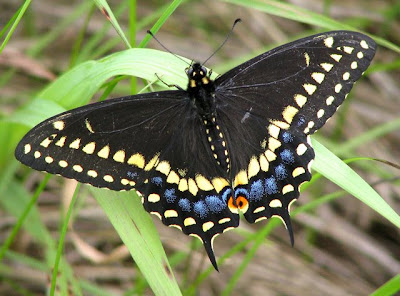With increasingly threatened habitats, the butterfly is becoming a much less frequent visitor to the urban garden. Here is a quick look at some local natives and the plants that attract them. Consider including some of these plants in your garden or terrace palette.
Take a look at some of these common, native Lepidoptera and some of the plants they are most attracted to.
 Papilio polyxenes asterius Stoll, Black swallowtail
Papilio polyxenes asterius Stoll, Black swallowtail
The black swallowtail is a black butterfly with yellow markings near the margins of the forewings and hindwings and more limited blue and red markings on the hindwings. Its wing span can reach 4 ½ inches. Full grown parselyworms or caterpillars can reach 2 inches in length and are smooth and green, marked with black bands and yellow spots. This butterfly is easy to attract and raise by planting dill or fennel in your vegetable garden.
 Pieris rapae, Cabbage butterfly
Pieris rapae, Cabbage butterfly
The cabbage butterfly is the common white butterfly throughout most of the eastern US. The larvae of this species is a pest when it feeds on cabbage, broccoli, the Brassicas, but it also feeds on many wild host plants. One of its favorite is wild mustard. There are several other white butterflies that also share the name as cabbage butterflies.
 Brassica nigra, Wild black mustard
Brassica nigra, Wild black mustard
 Papilio glaucus, Eastern tiger swallowtail
Papilio glaucus, Eastern tiger swallowtailThe male Eastern tiger swallowtail is yellow with dark tiger stripes. The female has 2 forms: one yellow like the male and the other black with shadows of dark stripes. of both female forms has many iridescent blue scales and an orange marginal spot. On the underside of the forewing of both female forms the row of marginal spots has merged into a continuous band. Adult wingspan can measure 3 5/8 - 6 1/2 inches. The adult butterflies visit many plants, both wild native plants and garden flowers. Some of these flowers include milkweed, thistle, Japanese honeysuckle, Ironweed and red clover.
 Asclepias tuberosa, Butterflyweed
Asclepias tuberosa, Butterflyweed Colias eurytheme, Orange Sulphur Butterfly
Colias eurytheme, Orange Sulphur ButterflyUpperside of male yellow with orange overlay, yellow veins, wide black border, and dark black cell spot. Female yellow or white with irregular black border surrounding light spots. Underside hindwing spot silver with 2 concentric dark rings, and a spot above it. Wing span can measures
1 3/8- 2 3/4 inches. Adult butterfly will feed on nectar from many kinds of flowers including dandelion, milkweeds, goldenrods, and asters.
 Solidago rigida, stiff goldenrod
Solidago rigida, stiff goldenrodButterflies and Moths of North America



